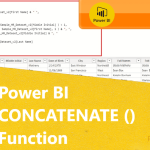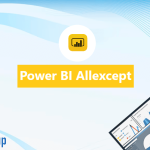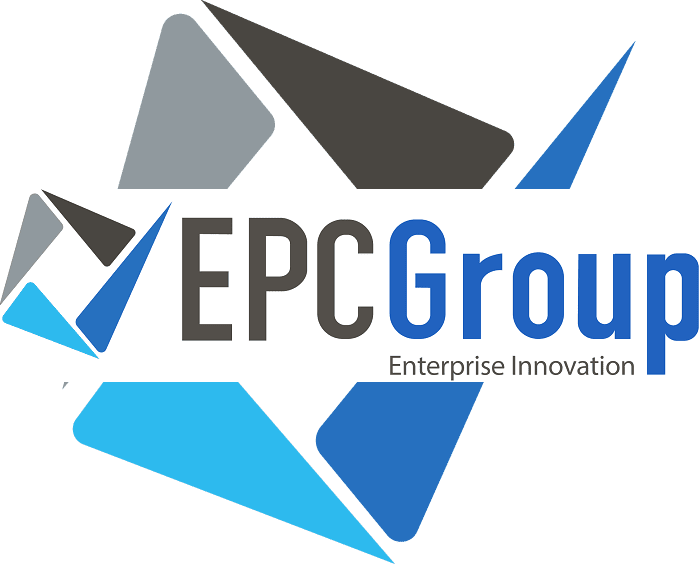The on-premises versus cloud environment debate about SharePoint started several years ago. That debate became much more heated when Jared Spataro, Director of SharePoint at Microsoft, announced during a conference that SharePoint 2013 was being developed using a “Cloud First” strategy and that Office 365 customers could expect to have access to the benefits of the new release sooner than on-premises deployments.
Note: Its key to always plan for future growth and scalability in your IT Roadmap and SharePoint Roadmap for a possible “Hybrid Cloud” implmentation.
Microsoft has recently reiterated this stance at the Microsoft SharePoint Conference 2014, and my personal opinion is that this Cloud First announcement has Microsoft testing the waters to see how many organizations will opt to dive right into Office 365 while also leaving the door open so to not alienate SharePoint’s long-term “bread and butter” on-premises deployment base, which has driven SharePoint to be the fastest-growing non-Windows product in Microsoft history.
Around the same time, Microsoft began referencing on-premises SharePoint deployments as the “private cloud” and off-premises environments as the “public cloud” or a variance of an external-based “cloud.” You could make the argument that the reference to SharePoint 2013 being developed using a “Cloud First” strategy could fit in either the private or the public cloud.
In this EPC Group blog post, we will discuss deploying SharePoint 2013 on-premises in a private cloud, as well as the SharePoint Online / Office 365 public cloud, as well as the mixture of both public and private clouds into a “hybrid cloud” deployment scenario, as depicted in the image below.
What Is a SharePoint “Private Cloud”?
To first describe and baseline a private cloud deployment, the following items will typically be considered and implemented. Hosting SharePoint’s infrastructure for a specific workload or combination of workloads such as these:
- Application platform for line-of-business (LOB) application
- Business intelligence implementations
- Collaboration, community, and/or project sites
- Internet/intranet publishing portal
- Personal sites
- Enterprise search
SharePoint private clouds have the following features:
- Scalable, flexible architectures
- Ability to host many “customers” or tenants
- Repeatable, predictable automated deployment and provisioning
- Upgrade, failover, and patching resiliency
Note: Many of these items can also be achieved in a hybrid cloud environment.
There are several factors that influence an organization’s decision regarding which architecture (that is, on-premises private cloud, public cloud, or hybrid cloud) they are going to design and implement for their short-term and long-term SharePoint roadmap needs, such as these:
- The overall size of the organization and user base
- Security issues
- Legal and compliance issues
- Any project or deployment time constraints
- Complexity of customers’ current environment
- Physical locations
- Current identity infrastructure
- Current IT infrastructure model and future IT roadmap
- Network bandwidth issues
- Software/hardware issues
- Any vendor service level agreement (SLA)
- High-availability/backup issues
- Internal resource issues and related training
- Support alignment
- Service reporting
- Standards adoption and management
- Development alignment
- Infrastructure alignment
- Development platform management
- Governance
- User issues
- Management and tools
- Development standards creation
- Information architecture and search
- Business requirements
- Infrastructure guidance
When you are taking complex environments into consideration, there are also items such as these:
- Multitenancy (Office 365 issues when a user goes outside of IT to create a new “environment”)
- Multiple farms
- Security (FBA, SAML claims, extranets)
- Global clients with PHI, PII, Safe Harbor, intellectual property, EU pushback, or NSA concerns due to recent news
It is key to also look at your current operations and how well your organization will be able to adapt to change.
There are existing maintenance windows that perform key backup and business continuity (DR) actions as well asLOB data connectivity updates and code promotion policies that must be considered, as shown in the image below.
Storage Design of SharePoint 2013 and Hybrid Office 365 Environments
When looking at storage in terms of the actual system architecture design perspective, the following initial items should start this conversation:
- How has storage been allocated for this effort or what may be available for this initiative?
- What are the actual costs of storage and/or purchasing or procuring in various-size allocations?
- Will you ever need to store more than 4TB?
Note: In most cases, you should not have to surpass this limit in your phase 1 roadmap planning.
- How are content databases arranged in terms of the information architecture and site collection design?
The storage design and requirements will continue to be clearer to you and the team as some additional questions are asked and the technical architecture design process that’s next described begins.
EPC Group’s Technical Architecture Design Process – High Level Overview
As you consider the questions asked in the previous sections, also consider the following list of technical architecture design process points.
This is a proven check list from EPC Group of items that should be followed and you should begin with one or more of the following:
- Business requirements of the organization
- Functional requirements of the organization
- User experience and devices from which SharePoint 2013 / Office 365 will be accessed
- Logical design
- Boundaries of SharePoint 2013 / Office 365
- Information architecture design
- Technical architecture
- Define, iterate, and revise
- Outcome
- Server counts
- Database design
- Server roles
- Storage requirements
- Sites / Portal / etc. design
Ensure That Your Design Starts with What You Currently Know
Ensure that this process first takes into consideration the items that have already been uncovered and are known to the project team. These items also take into consideration any roadblocks or lessons learned that you may have gained from previous IT initiatives within your organization.
The following is a list of items you should consider that you may already have a good deal of insight into:
- Constraints
- Cost
- Data center utilization goals
- Evolving business needs
- Risks
- “Undersizing”
- “Oversizing”
- Unknown limits and workload patterns
- Legal and compliance requirements
Digging In and Covering SharePoint-Specific Topics
There are specific requirements and prerequisites as well as predictable and repeatable results that must be established before a consulting firm should ever throw out the term “best practice,” and I believe that this has been accomplished in the new framework previously described that’s meant to “demystify” the cloud.
A common misconception is that IT or external resources have a vested interest in advising an organization to implement SharePoint 2013 on-premises rather than investigating the additional options involved in a possiblecloud-based or hybrid-based environment.
There is no getting around the fact that a successful SharePoint implementation is driven by key principles and best practices, and this applies regardless of where the actual deployment is applied.
Over the past few years, I have found that there are, in many cases, more technical requirements requiring the senior or expert level (SME) external resources of an organization to properly implement a secured cloudenvironment housing the data of an enterprise SharePoint 2013 deployment.
It is critical that these very important decisions regarding SharePoint’s architecture and your longer-term roadmap be made based on requirements and the corresponding capability of the specific on-premises, cloud, or hybrid offering to meet those requirements, because your organization’s critical systems as well as the intellectual property at the very core of a company’s existence are at stake.
I do think that some cloud providers are prematurely pushing or possibly “over marketing” the jump into a cloud that is really not enterprise ready when many questions remain improperly addressed regarding legal, regulatory,data spillage, data breach, and other possible issues.
Note: EPC Group has covered this topic in our previous blog post, Data Breaches and Implementing Proactive Security Policies.
Three Major Types of Cloud Services
It is important to understand the different options available for hosting, as well as the underlying options provided. There are currently three common offerings of the cloud:
- SaaS: Software as a service involves software such as Office 365. Software as a service has been a very popular on-demand software delivery mechanism typically delivered via web browser and other optional plug-ins.
- PaaS: Platform as a service encompasses all the development, service hosting, and service management environments needed to operate an application that uses on-demand compute and storage capacity and network bandwidth. These PaaS offerings also provide for the database and related services to be managed by the provider. Microsoft Azure and SQL Azure are great examples of a PaaS offering.
- IaaS: Infrastructure as a serviceprovides raw computer and storage capacity with management tools available to be controlled by the client. Microsoft’s System Center suite, which is run on the Hyper-V Cloud server environment within a Microsoft data center, is a perfect example of IaaS. Certain configurations ofMicrosoft Azure are also sometimes referred to as IaaS.
The SaaS model has been popular for many years and is typically straightforward or well understood. The PaaSand IaaS offerings have more recently started to compete with each other in some areas based on the options selected from the provider.
The image below the three major offerings gives examples of some popular industry solutions within each offering.
Eight Key IaaS Principles
EPC Group has identified eight key IaaS high-level principles as follows:
- Perception of infinite capacity
- Perception of continuous availability
- Drive predictability
- Take a service provider’s approach to delivering infrastructure
- Resiliency over redundancy mind-set
- Minimize human involvement
- Optimize resource usage
- Incentivize desired resource consumption behavior
EPC Group’s Nationally Recognized Practice Areas
EPC Group leading SharePoint, Office 365, Infrastructure Design and Business Intelligence Practice areas continue to lead the way in providing our clients with the most up-to-date and relevant information that is tailored to their individual business and functional needs.
Additional “From the Consulting Trenches” strategies and methodologies are covered in EPC Group’s new book, “SharePoint 2013 Field Guide: Advice from the Consulting Trenches” covering not only SharePoint 2013, Office 365 and SharePoint Online but Information Management, ECM\RM and overall compliance strategies in this ever changing world of “Hybrid IT.”










